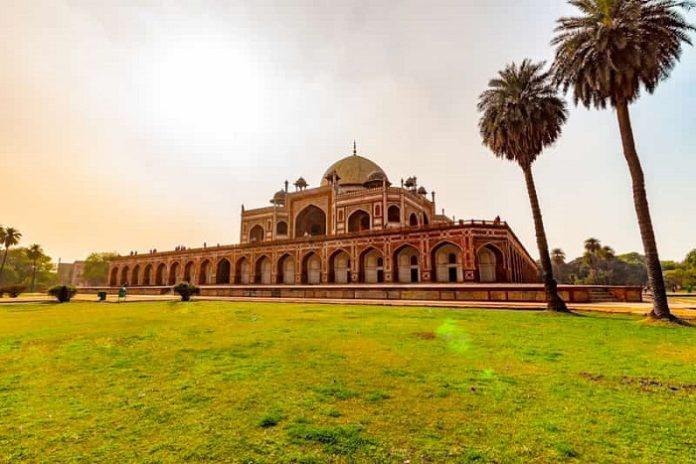Some places transport you back in time, such as monuments with more stories to tell than you’ll ever hear and buildings whose architecture is filled with historical events. Do you want to know where you may experience history in such a memorable and entertaining way? Delhi is here! So the monuments of Delhi have a lot to tell about Mughal stories, and history lovers can appreciate the historical monuments that stand the test of time and are still strong. Moreover, the historical monuments of Delhi provide a wealth of history, culture, art, and heritage, making our nation’s capital an alluring travel destination.
There are many historical sites in India, but Delhi has the most, presenting a significant representation of Mughal and British construction, and deciding which heritage site in Delhi to visit may be complex on its own. Historic structures and architecture retain the last relics of the ruling kings, providing a glimpse into their culture, beliefs, and way of living. With LIH Travels’ Golden Triangle India Tours packages, explore the monuments of the Delhi Sultanate and take a step back in history.
So now let us check some important monuments of Delhi that one must visit when here.
Ten Historical Monuments Of Delhi
1. Humayun’s Tomb
Humayun’s Tomb is a stunning illustration of Persian artistry from the Mughal Empire. Nine years after her husband’s death in 1526, Hamida Banu Begum ordered the building of the Humayun’s Tomb. So the impressive edifice is built entirely out of red sandstone.
The mausoleum is a setting in the Charbagh design with intertwining ponds and canals. Further, it has two entrances: one on the south and one on the west. The towering central archway and the octagonal shape of the edifice are crucial aesthetic components of Mughal architecture.
2. Red Fort
Shah Jahan built the Red Fort, or Lal Qila, among the most important monuments of Delhi. Several Mughal rulers also used this magnificent fortress-palace as their royal residence in Delhi. In addition, the red sandstone then used to build the fort’s reinforcing walls gives it its name. Further, the Prime Minister now hoists the flag and addresses the country during Independence Day celebrations at Red Fort, which draws millions of tourists annually.
3. Jama Masjid
Jama Masjid, which means “Friday Mosque,” is also used to refer to Masjid-e-Jehan Numa. Shah Jahan, the Mughal emperor, built one of the most significant mosques between 1650 and 1656. So this Muslim shrine, which has been around for 363 years, is among the best representations of Mughal architecture. Furthermore, the magnificent building, covered in red sandstone and white marble, has two 131-foot-tall minarets, three enormous domes, and three imposing gateways.
4. Safdarjung Tomb
Safdarjung Tomb is a beautiful mausoleum designed in the Mughal architectural form and constructed of marbles and sandstone. The mausoleum, constructed during the rule of the Mughal Emperor Ahmad Shah Bahadur, is now among the major monuments of Delhi. Additionally, many people are drawn to the area by its massive dome, tall arches, and stunning architecture. One of the last examples of Mughal construction, the mausoleum wonderfully combines the history and importance of the architectural wonders of the Mughals.
6. Ghata Masjid
Zeenat-ul-Masjid, often referred to as Ghata Masjid, is among the lesser-known historical monuments of Delhi. Zeenat-un-Nissa Begum, Emperor Aurangzeb’s daughter, constructed the Muslim shrine. The mosque is believed to be an exact mirror of Delhi’s well-known Jama Masjid. The stunning mosque’s sky-touching minarets are its most distinct feature.
7. Isa Khan’s Tomb
Humayun’s Tomb and Isa Khan’s Tomb are both in the same complex. The 15th century saw its construction. In Sher Shah Suri’s courts, Isa Khan was a nobleman from Afghanistan.
This mausoleum has several verandas, elaborate canopies, and polished tiles. One of Delhi’s earliest subterranean garden-style graves is this one.
You can also check:- makrana white marble exporter
8. Diwan-i-Am
The Diwan-i-Am is situated within the Red Fort, and it was here that the Emperor would greet the ordinary people. Furthermore, The hall is decorated with stucco and has golden columns. Further, this magnificent hall was also utilized for several state meetings and festivities.
9. Atgah Khan’s Tomb
Among the most remarkable mausoleums from the Mughal period, the Atgah Khan Tomb at Nizamuddin Basti is constructed of fine marble and red sandstone and is next to the well-known Sufi shrine, Nizamuddin Dargha. In 1566–1567, Mirza Aziz Kolkaltash, Atgah Khan’s son, constructed the monument in honor of his father. So, it is among the most important monuments of Delhi.
10. Quli Khan Tomb
The Quli Khan mausoleum at Mehrauli Archaeological Park was constructed in the 17th century. As the architecture of the Tomb matches Mughal architecture, it was constructed during the Mughal period during Jahangir’s reign.
Conclusion
So these were some of the monuments of Delhi of the Mughal era. You mustn’t miss these monuments in Delhi, particularly if you love history.
Also, read: Aero Mongolia Airlines: Your Ultimate Guide to a Seamless Travel Experience
